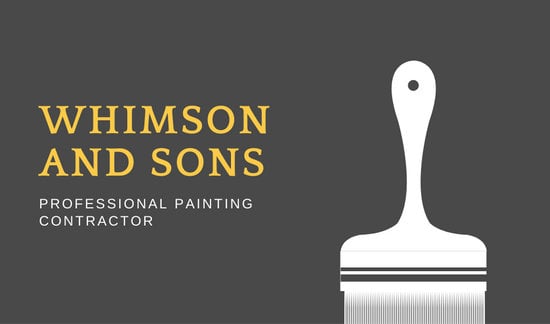Essential Seasonal Aspects Of Commercial Exterior Painting: What You Ought To Comprehend
Essential Seasonal Aspects Of Commercial Exterior Painting: What You Ought To Comprehend
Blog Article
Content Create By-Korsholm Whalen
When you're preparing an industrial exterior painting project, seasonal elements can make or break your results. You'll wish to think about just how temperature level and humidity effect paint application and drying out times. Picking the best period can ensure your paint sticks appropriately and lasts longer. But which periods are absolutely the best for this type of work? Let's discover the crucial elements that can impact your job's success.
The Influence of Temperature Level on Paint Application
When you're preparing an industrial external painting task, the temperature level can considerably affect exactly how well the paint sticks and dries.
Preferably, you intend to paint when temperature levels vary between 50 ° F and 85 ° F. If it's too cool, the paint may not heal appropriately, causing concerns like peeling off or splitting.
On the other hand, if it's as well warm, the paint can dry out too promptly, preventing proper adhesion and resulting in an uneven surface.
You should also consider the moment of day; early morning or late afternoon provides cooler temperatures, which can be a lot more beneficial.
Constantly examine the maker's referrals for the details paint you're making use of, as they usually give support on the optimal temperature array for ideal results.
Humidity and Its Result on Drying Times
Temperature level isn't the only ecological variable that affects your industrial exterior painting project; humidity plays a considerable function also. High humidity degrees can decrease drying out times significantly, affecting the total top quality of your paint work.
When the air is filled with wetness, the paint takes longer to heal, which can lead to concerns like inadequate attachment and a higher danger of mold development. If you're painting on a specifically moist day, be prepared for prolonged delay times between layers.
https://www.countryliving.com/diy-crafts/a34964969/painting-over-wallpaper/ to monitor neighborhood climate condition and plan accordingly. Preferably, go for humidity degrees between 40% and 70% for optimum drying out.
Keeping these factors in mind guarantees your job remains on track and provides an enduring finish.
Best Seasons for Commercial Outside Paint Projects
What's the best time of year for your business external paint tasks?
Spring and very early loss are usually your best choices. During these periods, temperature levels are moderate, and moisture levels are typically lower, producing suitable problems for paint application and drying out.
Stay clear of summer season's intense heat, which can cause paint to dry as well promptly, resulting in inadequate bond and surface. In a similar way, winter season's cool temperatures can hinder correct drying and curing, taking the chance of the longevity of your paint work.
Go for days with temperatures between 50 ° F and 85 ° F for optimum outcomes. Remember to examine the local weather forecast for rainfall, as wet problems can wreck your job.
Preparation around these aspects ensures your paint job runs smoothly and lasts much longer.
Conclusion
In conclusion, planning your commercial exterior paint jobs around seasonal considerations can make a considerable distinction in the outcome. By scheduling job during the perfect temperature levels and moisture degrees, you'll guarantee far better attachment and drying times. Bear in mind to watch on regional weather report and pick the correct time of year-- springtime and very early fall are your best choices. Taking top rated painting companies will certainly aid you achieve a durable and professional coating that lasts.
